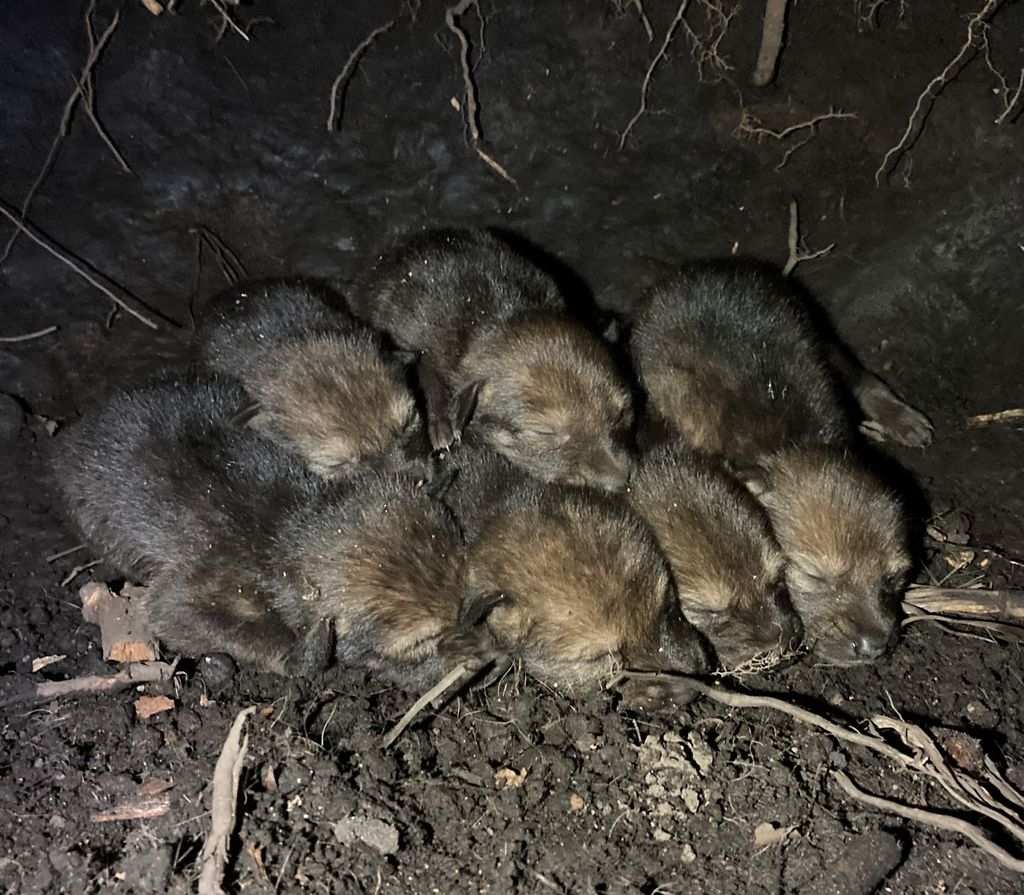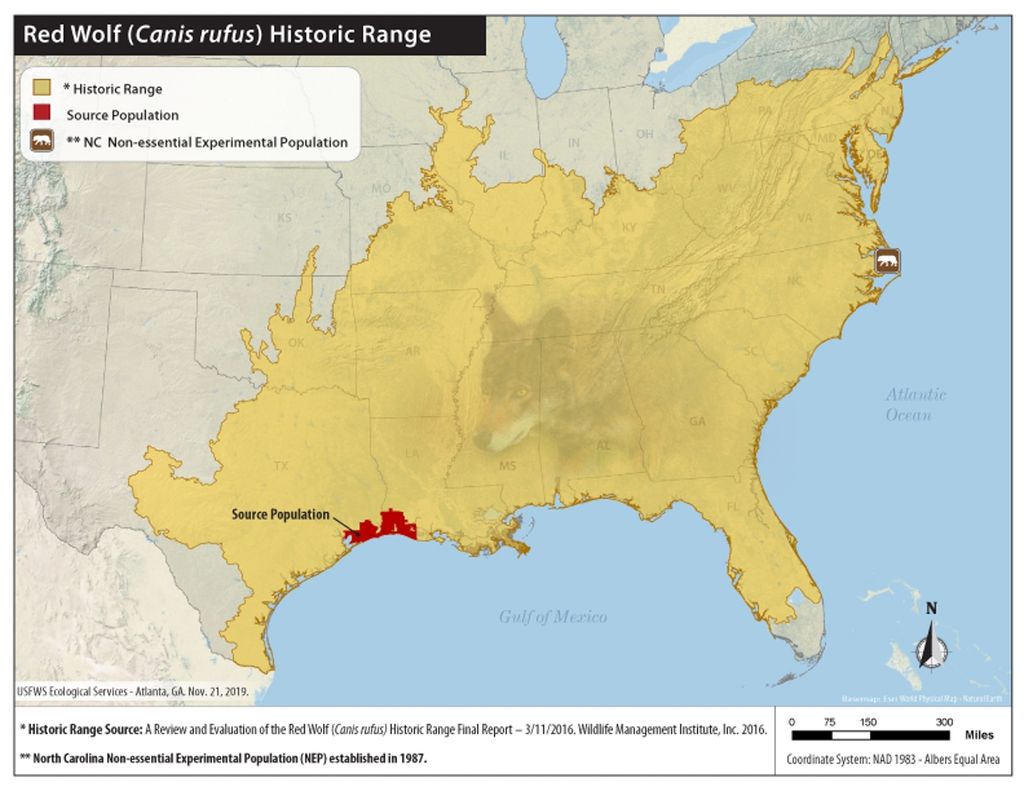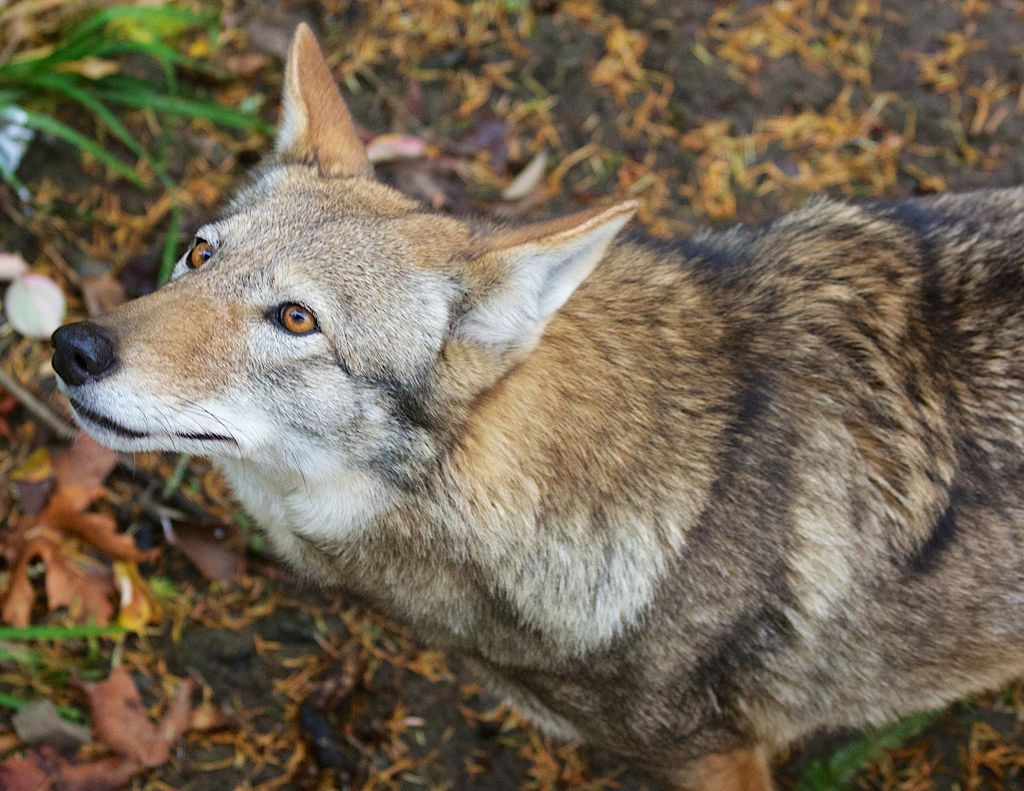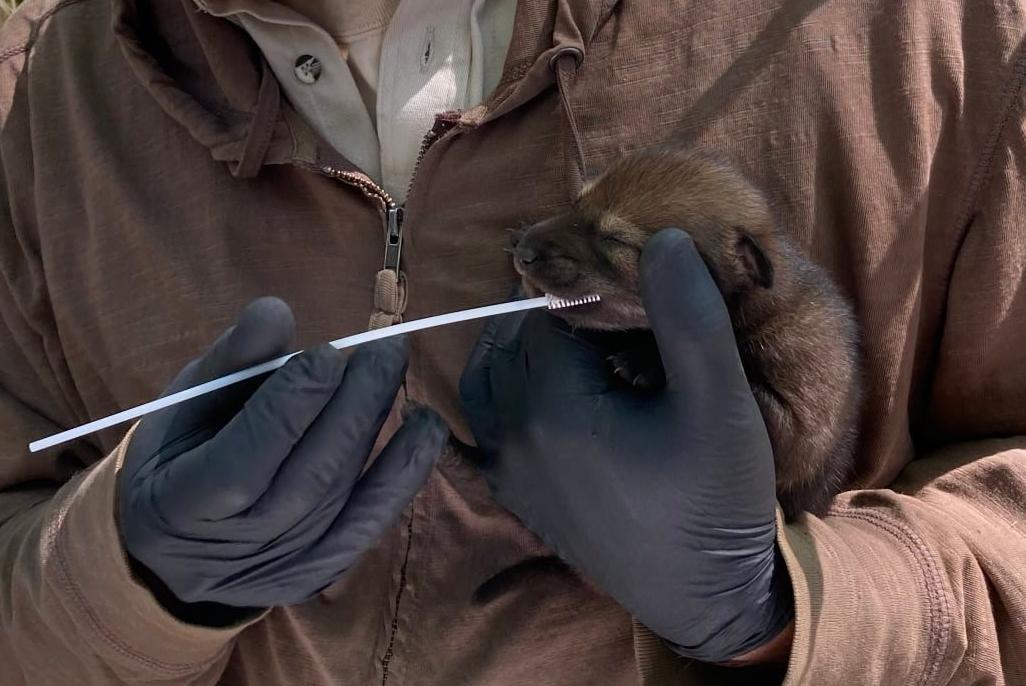Last Thursday, the US Fish and Wildlife Service (FWS) announced that six red wolf pups had been born in the wild. That’s great news for endangered red wolves, and marks the first time these pups have been born in the wild since 2018.
The litter of six pups was found in North Carolina’s Alligator River National Wildlife Refuge. Two of the pups are males and four are females. Since only 15 to 17 red wolves are still living in the wild, having six new wild-born pups is a huge deal.

(Source: Red Wolf Recovery Program/USFWS.)
Long ago, red wolves lived all through the US Southeast. But as the wolves were hunted, and as more and more land was taken over for cities, roads, and farms, the wolves began to die out.
In 1973, a new law called the Endangered Species Act was passed. It was designed to protect animals that were in danger of dying out, like red wolves. At the time, there were only about 17 red wolves remaining in the wild. They lived on the coast in Louisiana and Texas.
Fourteen of those wolves were caught and kept in captivity to protect them. The program was called the Red Wolf Recovery Program. By 1980, red wolves were believed to be extinct in the wild.

(Source: USFWS.)
Luckily, the wolves did well in captivity, and their numbers continued to grow. Soon the FWS began releasing red wolves back into the wild. Between 1987 and 1994, the recovery program released 60 adult red wolves.
Over time, those wolves spread out, paired up, and began to have pups. In 2008, there were 47 wild pups born. By 2012, red wolf numbers had hit a new high point of about 120 wolves in the wild. The program’s success led to many other programs aimed at bringing animals back from the edge of extinction.

(Source: B. Bartel USFWS .)
Sadly, though, wild red wolf numbers began to drop again. Some wolves were shot and others were hit by cars. As the number of adults fell, the number of pups being born also began to drop. In 2018, a total of four pups were born in the wild. In 2019, 2020, and 2021, no wild pups were born at all.
So the news that six pups hatched in the wild this year is a huge boost. The good news isn’t an accident. The FWS has been working hard to increase the number of red wolves in the wild.
Currently, there are over 240 captive red wolves in the recovery program. The FWS has released some captive wolves into the wild, and worked to pair these animals with wild wolves. The FWS has also taken pups born in captivity and had them raised by wild female wolves.

(Source: Red Wolf Recovery Program/USFWS.)
The FWS is already working to protect the new pups. Workers have taken samples of the pups’ DNA and put small “microchips” under their skin to make it easier to identify them. When the pups get older, they’ll probably be given tracking collars like most of the wild adult red wolves.
With luck, they will have even more company next year.
